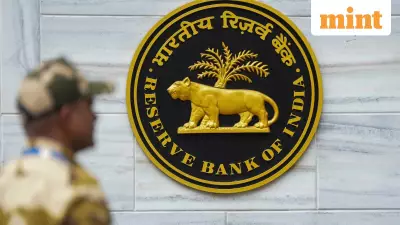
The International Energy Agency has identified India as the new powerhouse driving global energy market dynamics, taking over China's role as the main engine of demand growth. This significant shift comes as India makes rapid economic progress that positions it to reshape energy consumption patterns worldwide.
India's Dominance in Energy Demand Growth
According to the IEA's World Energy Outlook 2025 released on Wednesday, India will be the top contributor to growth in oil demand and the second largest in coal consumption by 2035. The report highlights that most coal consumption will be for power generation as the country continues its development trajectory.
The data reveals that nearly half of the additional barrels entering the global market by 2035 will be directed toward India. The country's oil consumption is projected to surge from 5.5 million barrels per day to 8 million barrels daily, driven by expanding car ownership, rising demand for plastics, chemicals, and increased aviation activity.
Economic Growth Fueling Energy Transformation
India's economic performance provides the foundation for this energy transformation. Between 2010 and 2024, India's GDP growth rate was second only to China among major countries and regions. Looking ahead to 2035, the IEA projects India's GDP will grow at an average rate of 6.1% annually - higher than any other major country or region.
The report emphasizes the scale of India's development by noting that GDP per capita will be 75% higher in 2035 compared to current levels. This economic expansion is accompanied by massive urbanization and infrastructure development.
"India adds the equivalent of one Bengaluru annually to its urban population, and its built floor space expands by 40%," the report stated, putting the country's growing energy needs in perspective. Additionally, India adds nearly 12,000 cars to its roads daily and is projected to add over 250 million air conditioners to homes over the next decade.
Green Energy Transition Accelerating
Despite leading growth in fossil fuel demand, India is simultaneously undergoing a remarkable clean energy transition. By 2035, more than half of India's electricity production will come from non-fossil fuel sources, which will account for 95% of capacity addition during this period.
The share of non-fossil sources in installed generation capacity is expected to rise significantly - reaching 60% in 2030 and 70% in 2035. This rapid transition is largely driven by the government's ambitious target of achieving 500 gigawatts of renewable energy capacity by 2030.
The investment pattern clearly demonstrates this shift. In 2015, every dollar invested in fossil power generation in India was broadly matched by a dollar invested in non-fossil sources, representing a 1:1 ratio. By 2025, this ratio had dramatically increased to 1:4 in favor of non-fossil sources.
Global Energy Security Concerns
The IEA report also sounded a cautionary note about emerging energy security challenges. Traditional energy risks are now accompanied by vulnerabilities in other areas, particularly in supply chains for critical minerals essential for power grids, batteries, electric vehicles, and other clean energy technologies.
The report highlighted that a single country dominates refining for 19 out of 20 energy-related strategic minerals, with an average market share of approximately 70%. While not explicitly naming China, the reference points to the concentrated nature of critical mineral processing that could pose supply chain risks for India's energy transition.
This comprehensive assessment positions India at the center of global energy dynamics, balancing its role as the primary driver of energy demand growth with its ambitious transition toward cleaner energy sources that will shape the country's economic and environmental future.





